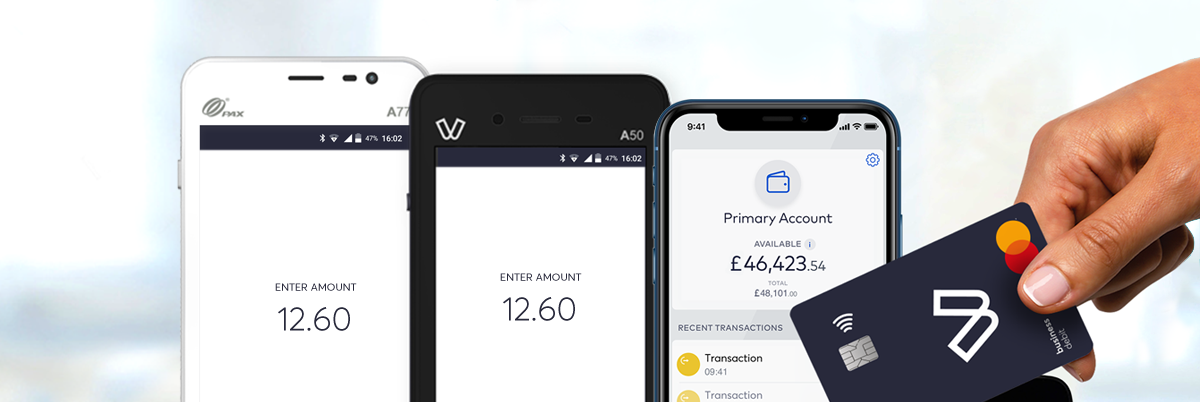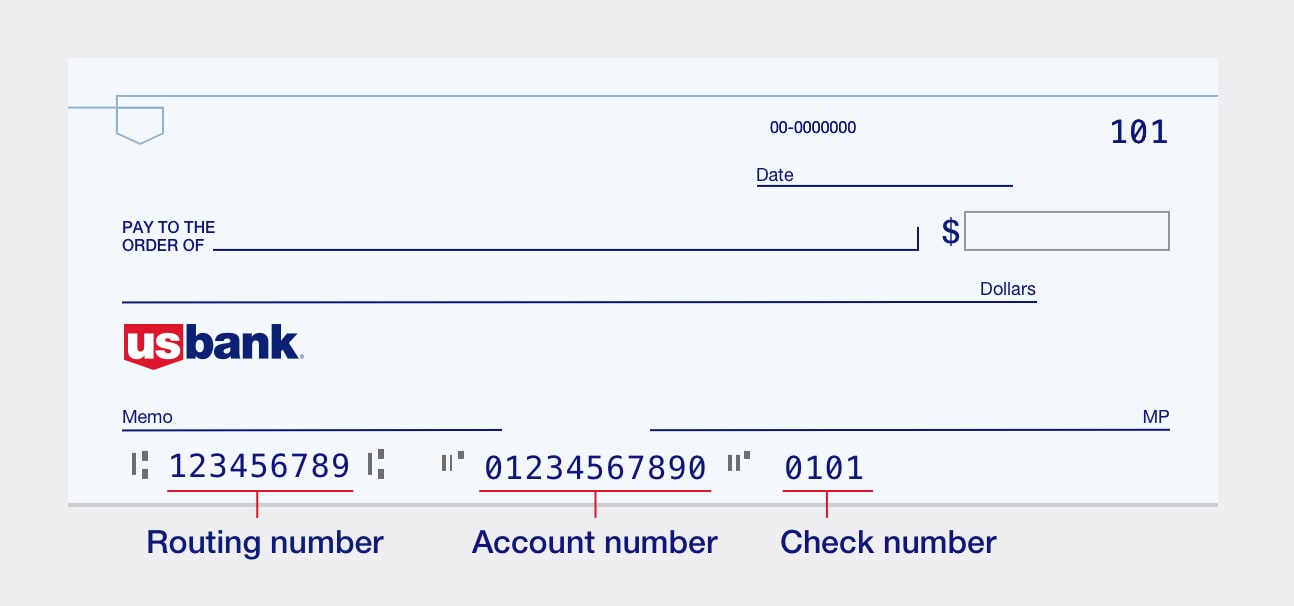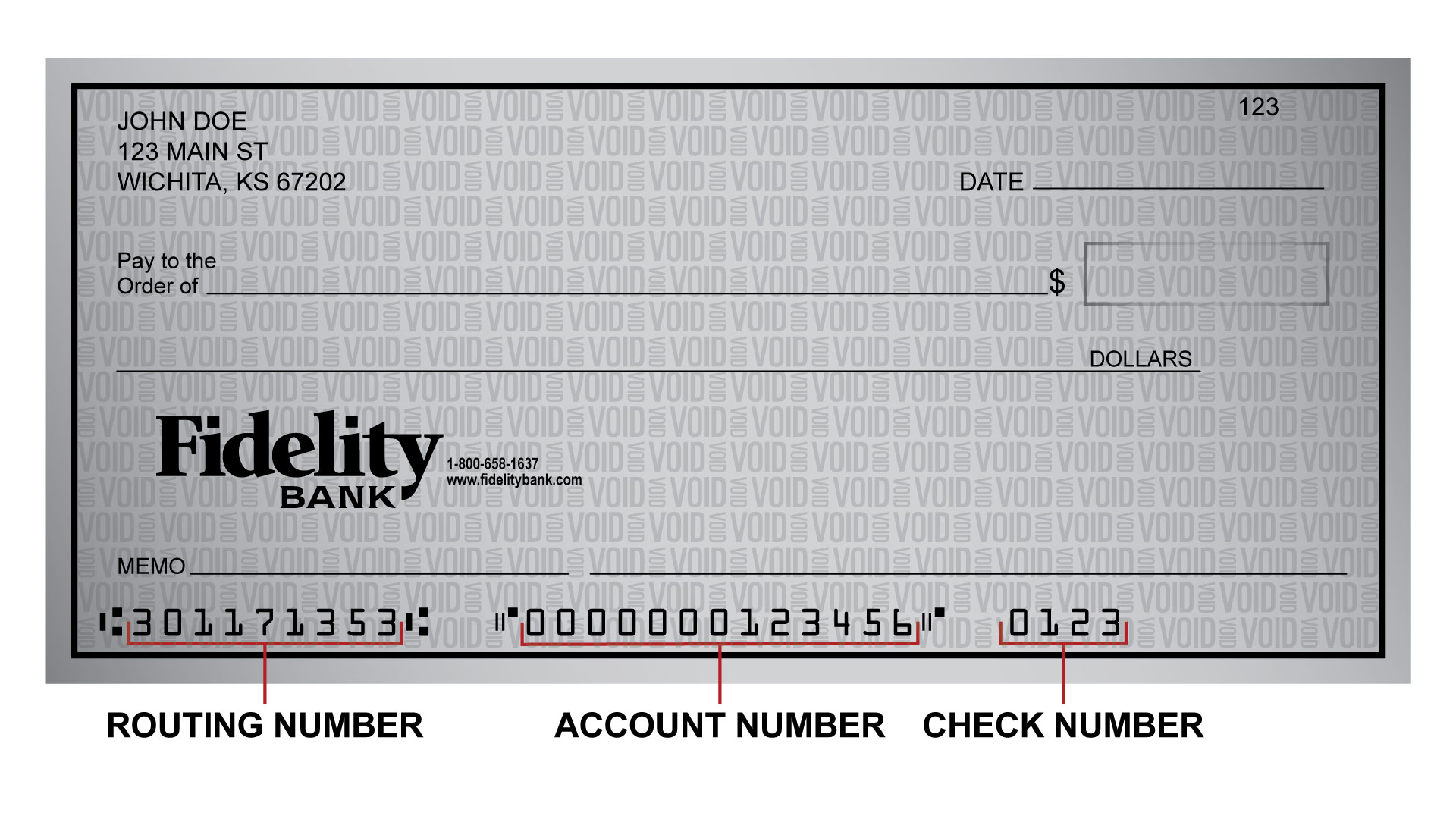What Is A Wire in Banking?
In the world of banking, a wire transfer, also known as a bank transfer or simply a wire, is a secure electronic method of sending money from one financial institution to another. It allows individuals and businesses to transfer funds quickly and efficiently, both domestically and internationally.
Unlike traditional paper methods such as checks or money orders, wire transfers provide a direct and immediate transfer of funds between accounts. The process involves a series of electronic messages exchanged between the sending and receiving banks, facilitating the movement of money.
A wire transfer typically requires the sender to provide specific information, such as the recipient’s bank account number, routing number, and any additional details required by the receiving institution. Once initiated, the funds are debited from the sender’s account and credited to the recipient’s account in a matter of hours or even minutes, depending on the banks involved and the destination of the transfer.
Wire transfers are commonly used for a variety of purposes, including personal transfers, business transactions, payment of bills or invoices, and real estate transactions. They offer a secure and convenient way to move large sums of money, ensuring prompt receipt by the intended recipient.
It is important to note that wire transfers are not limited to individuals or businesses with bank accounts. Many money transfer service providers also offer wire transfer services, allowing individuals without a traditional bank account to send or receive funds.
Overall, wire transfers play a crucial role in facilitating the movement of funds across the global banking system. Their speed, security, and reliability make them a preferred method for financial transactions, especially when time is of the essence.
Introduction
In today’s digital age, financial transactions have become increasingly convenient and efficient. One such method that has gained popularity in the banking industry is the wire transfer. As technology evolves, so does the way we handle money, and wire transfers have emerged as a secure and speedy way to transfer funds.
This article aims to provide a comprehensive understanding of what a wire transfer is, how it works, and its various aspects. Whether you’re new to banking or just curious, this article will serve as a useful guide.
We will start by defining a wire transfer and exploring its key characteristics. Understanding these fundamentals is essential to grasp the intricacies of the process. Next, we will delve into the mechanics of initiating a wire transfer and highlight the different types of transfers available.
While wire transfers offer numerous advantages, it’s crucial to consider the fees and costs associated with them. We will discuss the common expenses incurred during wire transfers and provide insights into optimizing these costs.
Security is a paramount concern when transferring money electronically. We will address the security measures implemented by banks and financial institutions to ensure the safety and confidentiality of wire transfers. Additionally, we will provide insights into the precautions individuals should take when sending or receiving wire transfers.
By the end of this article, you will have a comprehensive understanding of wire transfers, their benefits, potential costs, and the security measures in place to protect your financial transactions.
So, let’s dive into the world of wire transfers and unravel the intricacies of this crucial aspect of modern banking.
Definition of a Wire
In the realm of banking, a wire transfer, also known simply as a wire, refers to the electronic transfer of funds from one financial institution to another. It enables individuals, businesses, and organizations to send and receive money quickly, securely, and conveniently.
Unlike other traditional methods of transferring funds, such as checks or money orders, wire transfers provide an expedited and direct transfer of funds between bank accounts. The process entails the electronic exchange of instructions and information between the sending and receiving banks to facilitate the movement of money.
Wire transfers require specific details to be provided by the sender, including the recipient’s bank account number, routing number, and any additional information requested by the recipient’s institution. Once initiated, the funds are debited from the sender’s account and credited to the recipient’s account, typically within hours or even minutes, depending on the participating banks and the destination of the transfer.
It is important to note that wire transfers can occur domestically within the same country or internationally between different countries. Domestic wire transfers are generally processed more quickly compared to international transfers due to varying regulations and clearing processes.
Wire transfers have become an integral part of the modern banking system, facilitating a wide range of financial transactions. They can be used for personal transfers, such as sending money to family or friends, as well as for business purposes, such as paying suppliers or employees. Wire transfers are also commonly used for real estate transactions, large purchases, and international trade.
Furthermore, wire transfers are not limited to traditional bank accounts. Many money transfer service providers offer wire transfer services, enabling individuals without bank accounts to send or receive funds.
Overall, wire transfers are a secure and reliable method of transferring funds between financial institutions, offering a rapid and efficient way to move money domestically or internationally. Understanding the definition and mechanics of wire transfers is essential for anyone seeking to utilize this convenient and widely-used banking service.
How a Wire Transfer Works
Wire transfers function through a series of electronic instructions and communications exchanged between the sending and receiving financial institutions. Let’s explore the step-by-step process that occurs when initiating a wire transfer:
- Initiation: The sender provides the necessary information to the sending bank, including the recipient’s account number, routing number, and any other required details. The sender may also specify the amount and purpose of the transfer.
- Verification: The sending bank verifies the sender’s account balance and the availability of sufficient funds to cover the transfer. If the sender has the necessary funds, the bank proceeds to the next step.
- Authentication: The sending bank authenticates the wire transfer request by validating the sender’s identity and confirming the accuracy of the provided information. This step is crucial to prevent fraud and unauthorized transfers.
- Instruction: The sending bank electronically transmits the transfer instructions to the receiving bank. These instructions include the recipient’s account details, the amount to be transferred, and any relevant information or instructions specified by the sender.
- Processing: Upon receiving the instructions, the receiving bank processes the wire transfer and verifies the recipient’s account information. The funds are then credited to the recipient’s account.
- Notification: Once the transfer is successfully processed, both the sender and recipient receive confirmation of the transaction. This notification can be in the form of an email, SMS, or a message within the online banking system.
- Completion: The wire transfer is considered complete when the funds are successfully transferred and made available to the recipient. The time it takes for the funds to be available to the recipient varies depending on factors such as the participating banks, the destination of the transfer, and any applicable clearing and settlement processes.
It is essential to note that the specific process and timeline for wire transfers may vary among financial institutions and countries. Some transfers may be processed and completed within minutes, while others may take several business days to reach the recipient’s account.
Wire transfers provide a secure and efficient method of transferring funds, enabling individuals and businesses to send and receive money domestically and internationally. Understanding how a wire transfer works empowers users to make informed decisions and utilize this banking service effectively.
The Process of Initiating a Wire Transfer
Initiating a wire transfer involves several steps to ensure the secure and accurate transfer of funds between financial institutions. Let’s walk through the typical process of initiating a wire transfer:
- Gather Information: Start by collecting the necessary information for the wire transfer. This includes the recipient’s full name, bank account number, bank routing number, and any additional details required by the receiving institution. Ensure that you have the correct information to avoid any delays or misdirected transfers.
- Select the Bank: Choose the bank or financial institution through which you will initiate the wire transfer. Ensure that the bank has wire transfer services available and inquire about any applicable fees or requirements.
- Complete the Wire Transfer Form: Visit the bank or access the online banking platform to complete the wire transfer form. Provide the required sender and recipient information, including account details and the amount to be transferred.
- Verify the Transfer Details: Double-check all the provided information on the wire transfer form to ensure its accuracy. Mistakes in account numbers or routing numbers can result in delays or even failed transfers.
- Authorize the Transfer: Sign the wire transfer form or provide any necessary authentication required by the bank to authorize the transfer. This may include providing a unique PIN or online banking password.
- Provide Additional Documentation: In certain cases, such as international wire transfers or transfers exceeding a certain amount, you may be asked to provide additional documentation, such as identification or proof of transaction purpose. Make sure to have these documents readily available to avoid any delays.
- Pay the Required Fees: Pay any fees associated with the wire transfer. Common fees include service charges, intermediary bank fees (for international transfers), and expedited processing fees.
- Confirm the Transfer: Once the wire transfer is initiated, the bank will provide confirmation of the transaction. This confirmation may be in the form of a receipt, an email notification, or a message within the online banking system.
- Follow Up: After initiating the wire transfer, you can monitor the progress of the transfer by contacting your bank or checking the online banking platform. Be sure to keep records of the transaction details for future reference.
It’s important to note that the time it takes for a wire transfer to be completed can vary, depending on factors such as the participating banks, the destination of the transfer, and any applicable clearing and settlement processes. Domestic transfers are generally faster than international transfers, which may take several business days to reach the recipient’s account.
By following these steps and providing accurate and complete information, you can ensure a smooth and efficient wire transfer process.
Different Types of Wire Transfers
Wire transfers come in different variations to suit various needs and circumstances. Let’s explore some of the common types of wire transfers:
- Domestic Wire Transfers: This type of wire transfer involves the movement of funds between bank accounts within the same country. It is typically used for sending money to individuals or businesses located in the same geographical region.
- International Wire Transfers: International wire transfers involve the transfer of funds between bank accounts located in different countries. They are commonly used for cross-border transactions, such as sending money to family members abroad, paying suppliers or vendors overseas, or making international investments.
- Bank-to-Bank Transfers: Bank-to-bank wire transfers allow individuals or businesses to transfer funds between accounts held at different financial institutions. This type of transfer can be utilized for various purposes, such as consolidating funds from different accounts or moving money between personal and business accounts.
- Wire Transfers through Money Transfer Providers: In addition to traditional banks, there are also specialized money transfer providers that offer wire transfer services. These providers allow individuals without traditional bank accounts to send or receive funds through alternative means, such as prepaid cards or mobile wallets.
- Electronic Funds Transfer: Electronic funds transfers (EFTs) are a type of wire transfer that involves the electronic movement of funds between accounts, either domestically or internationally. They can be initiated through various channels, including online banking platforms, mobile banking apps, and automated phone systems.
- Standing Wire Transfers: Standing wire transfers are recurring transfers set up to occur at regular intervals, such as monthly or quarterly. They are often used for recurring payments, such as mortgage payments, subscription fees, or employee salaries.
- Express or Expedited Wire Transfers: Express or expedited wire transfers are available for those who require immediate funds transfer. These transfers typically incur higher fees but offer faster processing times to ensure timely delivery of funds.
It’s important to note that the availability of these types of wire transfers may vary among financial institutions. Therefore, it’s advisable to check with your bank or money transfer service provider to understand the specific wire transfer options they offer.
By understanding the different types of wire transfers available, individuals and businesses can choose the most suitable option based on their specific needs, whether it’s a domestic transfer, an international transaction, or a recurring payment.
Advantages of Using Wire Transfers
Wire transfers offer several advantages that make them a preferred method of transferring funds for individuals and businesses. Let’s explore some of the key benefits of using wire transfers:
- Speed: Wire transfers are known for their speed and efficiency. Unlike traditional methods like checks or money orders that can take days or even weeks to clear, wire transfers often transfer funds within hours or even minutes, ensuring prompt receipt by the intended recipient.
- Security: Wire transfers are highly secure. The electronic nature of wire transfers minimizes the risk of loss, theft, or damage associated with physical forms of payment. Additionally, financial institutions implement robust security measures to protect customers’ funds during the transfer process.
- Convenience: Wire transfers provide convenience to individuals and businesses in need of quick and hassle-free fund transfers. With wire transfers, there is no need for physical visits to banks or the inconvenience of mailing checks or money orders. The process can often be initiated online or through mobile banking platforms.
- Global Reach: Wire transfers can facilitate transactions globally, allowing individuals and businesses to send and receive funds across international borders. This makes wire transfers an invaluable tool for international trade, cross-border investments, and supporting family members or friends abroad.
- Certainty of Payment: Wire transfers provide an assurance of payment. Once the funds are successfully transferred, they are typically considered as settled and available to the recipient immediately. This reliability makes wire transfers a preferred method for large transactions, such as real estate purchases or business acquisitions.
- Record Keeping: Wire transfers generate a transaction record that serves as proof of payment or transfer. This record is valuable for financial tracking, business accounting, and legal compliance purposes. Additionally, the electronic format of wire transfer records allows for easy retrieval and storage.
It’s important to note that while wire transfers offer numerous advantages, it is essential to understand and consider any associated fees or costs. Depending on the financial institutions involved and the nature of the transfer, fees may vary. It is advisable to compare costs and explore any potential discounts or options for reducing fees.
Overall, wire transfers provide speed, security, convenience, and global reach, making them an appealing and reliable method for transferring funds for individuals and businesses alike.
Fees and Costs Associated with Wire Transfers
While wire transfers offer a convenient and secure method of transferring funds, it is important to consider the fees and costs associated with this banking service. Understanding the potential charges involved can help individuals and businesses make informed decisions and effectively manage their finances. Here are some key factors to consider:
Sender Fees: The sender of a wire transfer is typically responsible for paying various fees associated with the transaction. These fees can vary depending on the financial institution, the destination of the transfer (domestic or international), and the transfer amount. Common sender fees include service charges, transaction fees, and expedited processing fees for faster transfers.
Recipient Fees: In some cases, the recipient of a wire transfer may also incur fees. This can happen when the receiving bank charges fees for accepting incoming wire transfers. It is essential to check with the recipient’s bank to understand if any charges apply and account for them in the overall cost of the transaction.
Intermediary Bank Fees: For international wire transfers, funds may pass through one or more intermediary banks before reaching the recipient’s bank. These intermediary banks may charge fees for processing and routing the transfer. The amount of these fees can vary and are typically deducted from the transfer amount.
Exchange Rate Fees: When transferring funds internationally, exchange rates come into play. Financial institutions often apply their own exchange rates, which can differ from the current market rates. These differences can result in additional costs for the sender or the recipient. It is advisable to compare exchange rates and consider using currency exchange services that offer competitive rates to minimize costs.
Additional Charges: Depending on the nature of the transaction, there may be additional charges associated with wire transfers. For example, some banks impose fees for amending or canceling wire transfers, while others charge for generating duplicate wire transfer records or sending confirmation notifications via mail.
To effectively manage wire transfer costs, it is important to compare fees and charges across different financial institutions. Consider factors such as the speed of transfer, reliability, and customer service alongside the associated fees. Some banks offer discounted or waived fees for certain account types, frequent users, or specific transaction volumes.
Note that some money transfer service providers may offer competitive rates and lower fees compared to traditional banks. It’s worth exploring these alternatives while ensuring the provider is reputable and regulated to ensure the security of your funds.
Being aware of the potential fees and costs associated with wire transfers allows individuals and businesses to make informed decisions and optimize their finances when utilizing this banking service.
Security Measures for Wire Transfers
Wire transfers are subject to rigorous security measures to ensure the safe and confidential transfer of funds. Financial institutions implement various safeguards to protect against fraud, unauthorized access, and other potential risks. Let’s explore some of the common security measures in place for wire transfers:
Authentication and Verification: Banks employ strict authentication processes to ensure the identity of the sender and confirm the accuracy of the transfer information. This includes verifying the sender’s account details, requiring unique identifiers or passwords, and conducting additional identity checks when necessary.
Secure Communication Channels: Financial institutions prioritize secure communication channels to protect the transmission of sensitive information during the wire transfer process. Encryption technology and secure connection protocols, such as Secure Socket Layer (SSL) or Transport Layer Security (TLS), are utilized to safeguard data exchanged between the sender and the financial institution.
Fraud Monitoring and Detection: Banks employ sophisticated fraud prevention systems to detect and prevent fraudulent wire transfer activity. These systems utilize algorithms and machine learning techniques to analyze transaction patterns, detect suspicious behavior, and flag potentially fraudulent transfers for investigation.
Transaction Monitoring: Financial institutions continuously monitor wire transfer activity to identify any unusual or high-risk transactions. This includes monitoring for large transfers, multiple transfers to different accounts, or transfers to high-risk jurisdictions. Any suspicious activity is promptly investigated to prevent fraudulent transactions.
Employee Training and Awareness: Banks invest in comprehensive training programs to educate employees about potential fraud schemes and security risks pertaining to wire transfers. Regular training sessions and updates ensure that employees are equipped to identify and mitigate fraudulent activities and maintain the security of customer transactions.
Regulatory Compliance: Banks adhere to strict regulatory standards and requirements governing wire transfers. These regulations, such as the Bank Secrecy Act (BSA) and Anti-Money Laundering (AML) regulations, aim to prevent money laundering, terrorist financing, and other illicit activities through wire transfers. Financial institutions implement robust compliance programs to meet these regulatory obligations.
Customer Education: Banks provide education and guidance to customers regarding the security of wire transfers. Customers are informed of best practices, such as protecting their account information and verifying the authenticity of wire transfer requests. Banks also advise customers to remain vigilant for phishing attempts or other fraudulent schemes targeting wire transfers.
While financial institutions employ comprehensive security measures, customers also play a vital role in safeguarding their wire transfers. It is important to maintain the confidentiality of personal and account information, use strong and unique passwords, regularly monitor transaction activity, and promptly report any suspicious or unauthorized transfers to the bank.
By implementing a combination of robust security measures, regulatory compliance, and customer education, the banking industry aims to provide secure wire transfer services and protect customers’ funds from potential risks and fraudulent activities.
Considerations when Sending or Receiving a Wire Transfer
When it comes to sending or receiving a wire transfer, there are several important considerations to keep in mind to ensure a smooth and secure transaction. Let’s explore some key factors to consider:
Accuracy of Information: Double-check all the provided information, including the recipient’s account number and routing number. Any errors in these details can result in delays, misdirected transfers, or even lost funds. Taking a moment to verify the accuracy of the information is crucial before initiating the wire transfer.
Timing: Consider the timing of your wire transfer. Factors such as banking hours, weekends, or public holidays can affect the processing time of the transfer. If time is of the essence, inquire about cut-off times for same-day processing to ensure the funds are transferred promptly.
Costs and Fees: Understand the fees associated with the wire transfer. Banks may charge various fees, such as service charges, transaction fees, and intermediary bank fees (for international transfers). Additionally, inquire about any receiving fees that may be applicable to the recipient. Consider comparing fees across different financial institutions to find the most cost-effective option for your transfer.
Exchange Rates: If you are sending or receiving an international wire transfer involving currency conversion, understand the exchange rates that will be applied. Banks often offer their own exchange rates, which may differ from the current market rates. Familiarize yourself with the rates and consider using currency exchange services that offer competitive rates to minimize costs.
Security Measures: Ensure that the financial institution handling the wire transfer has robust security measures in place. This includes encryption protocols, authentication processes, and secure communication channels. Be cautious of any suspicious communication or requests for personal or financial information that may indicate a fraudulent attempt.
Confirmation: Once the wire transfer is initiated, retain proof of the transaction. Save copies of any wire transfer forms, receipts, or confirmation notifications received from the bank. These records serve as proof of the transfer and can be valuable in case of any discrepancies or issues that may arise.
Communication with the Recipient: When sending a wire transfer, it can be helpful to inform the recipient in advance. Provide them with the necessary details and instructions to ensure a smooth receipt of the funds. Similarly, if you are expecting to receive a wire transfer, communicate the required information to the sender accurately to avoid any delays or complications.
Monitoring and Follow-Up: Keep track of the wire transfer’s progress. Check with your bank regularly to inquire about the status of the transfer and promptly address any concerns or delays that may arise. Maintaining open lines of communication and following up on the transfer can help ensure its successful completion.
By considering these factors and taking appropriate precautions, individuals and businesses can have confidence in the security, accuracy, and timely completion of their wire transfers.
Conclusion
Wire transfers are a vital component of modern banking, providing individuals and businesses with a secure and efficient method of transferring funds domestically and internationally. Understanding the intricacies of wire transfers is essential for anyone looking to utilize this banking service effectively.
In this article, we explored the definition of wire transfers and their key characteristics. We learned about the process of initiating a wire transfer, including the necessary information and steps involved. We also discussed the different types of wire transfers, such as domestic transfers, international transfers, and transfers through money transfer providers.
Furthermore, we examined the advantages of wire transfers, such as their speed, security, convenience, and global reach. However, we also highlighted the importance of considering the fees and costs associated with wire transfers to make informed decisions about their usage.
Security is a paramount concern that we addressed as well. We discussed the various security measures implemented by financial institutions to protect wire transfers from fraud and unauthorized access. Additionally, we outlined the considerations individuals and businesses should keep in mind when sending or receiving wire transfers to ensure a smooth and secure transaction.
By understanding the fundamentals and considerations surrounding wire transfers, individuals and businesses can confidently utilize this banking service to meet their financial needs, whether it’s transferring funds to loved ones, making international payments, or conducting business transactions.
It is important to note that specific procedures, fees, and security measures may vary between financial institutions and countries. Therefore, it is advisable to consult with your bank or money transfer service provider for the most accurate and up-to-date information.
Overall, wire transfers enable the seamless movement of funds in our global economy. Their speed, security, and convenience make them an indispensable tool in today’s digital banking landscape.

























